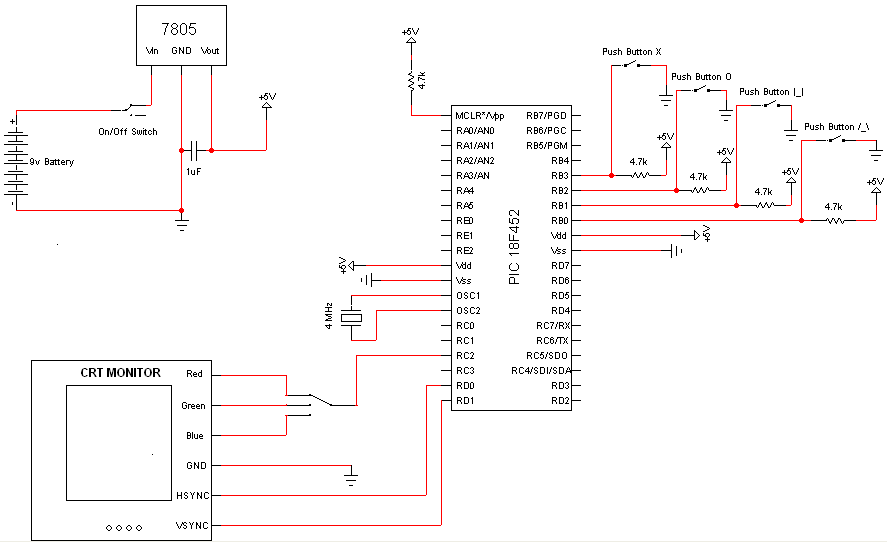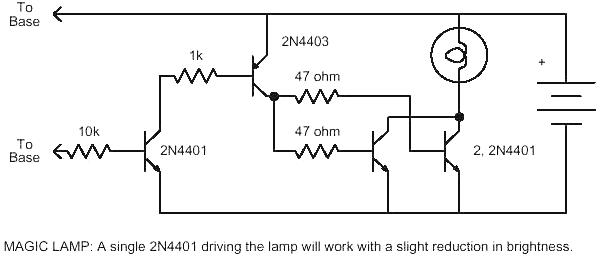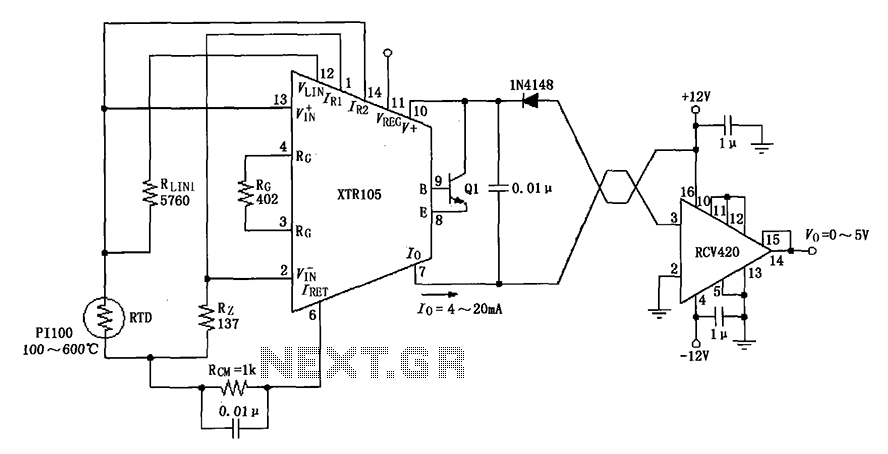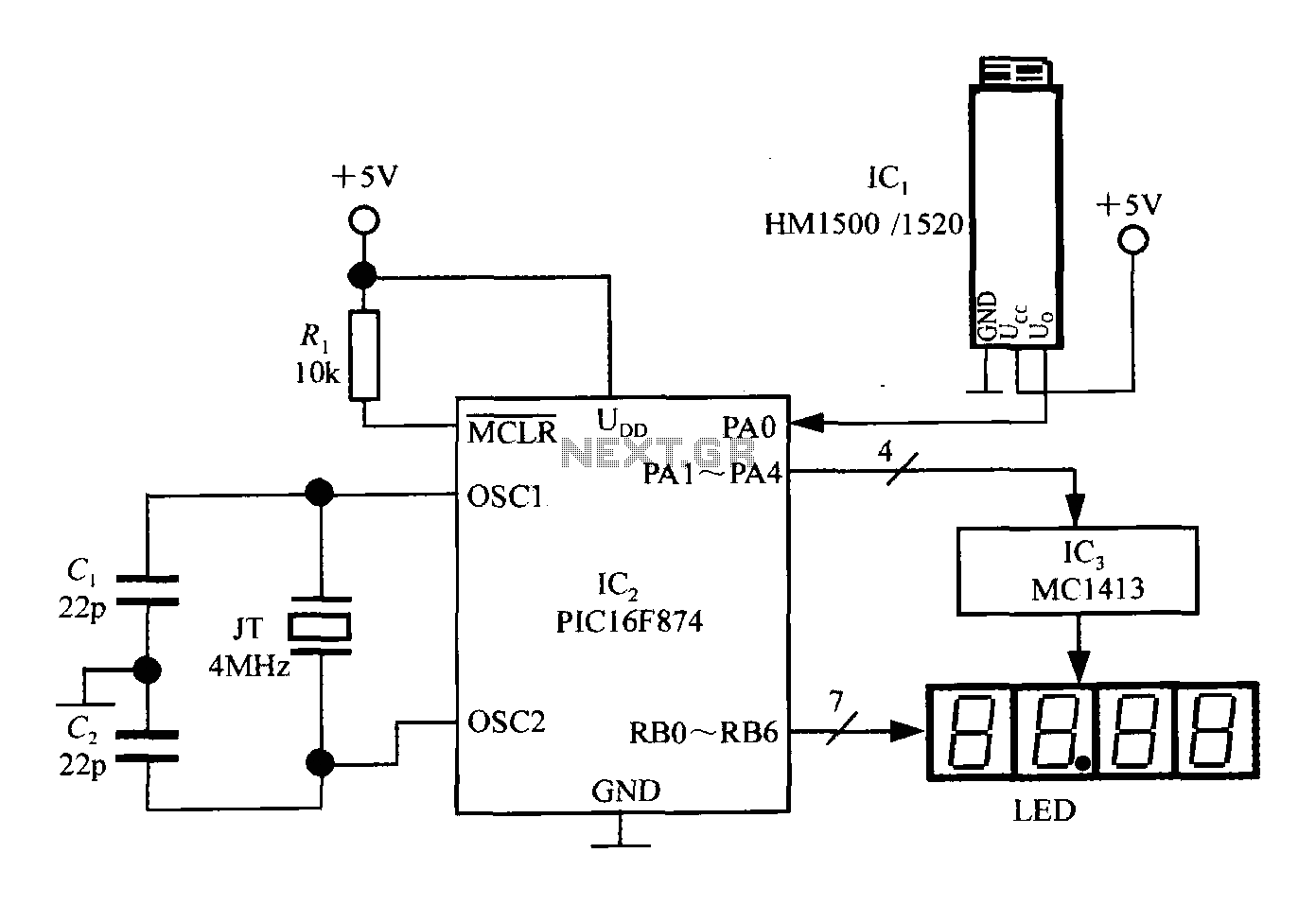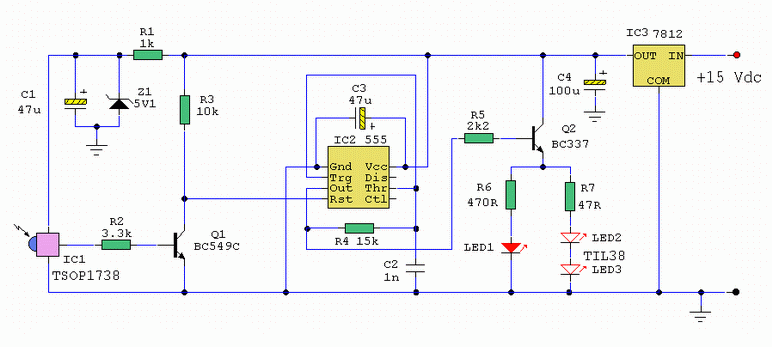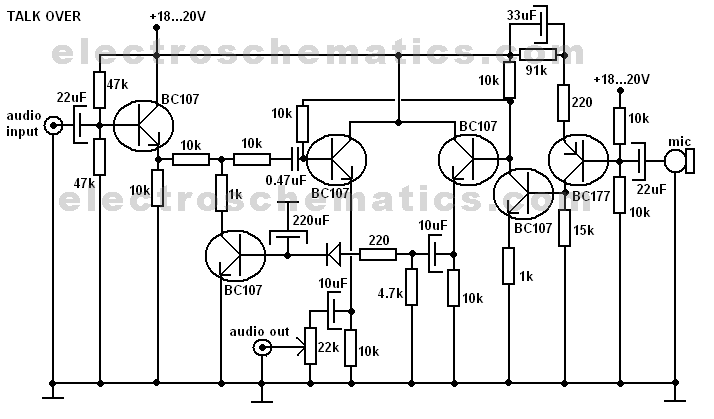
XTR108 circuit diagram of a three-wire RTD connection
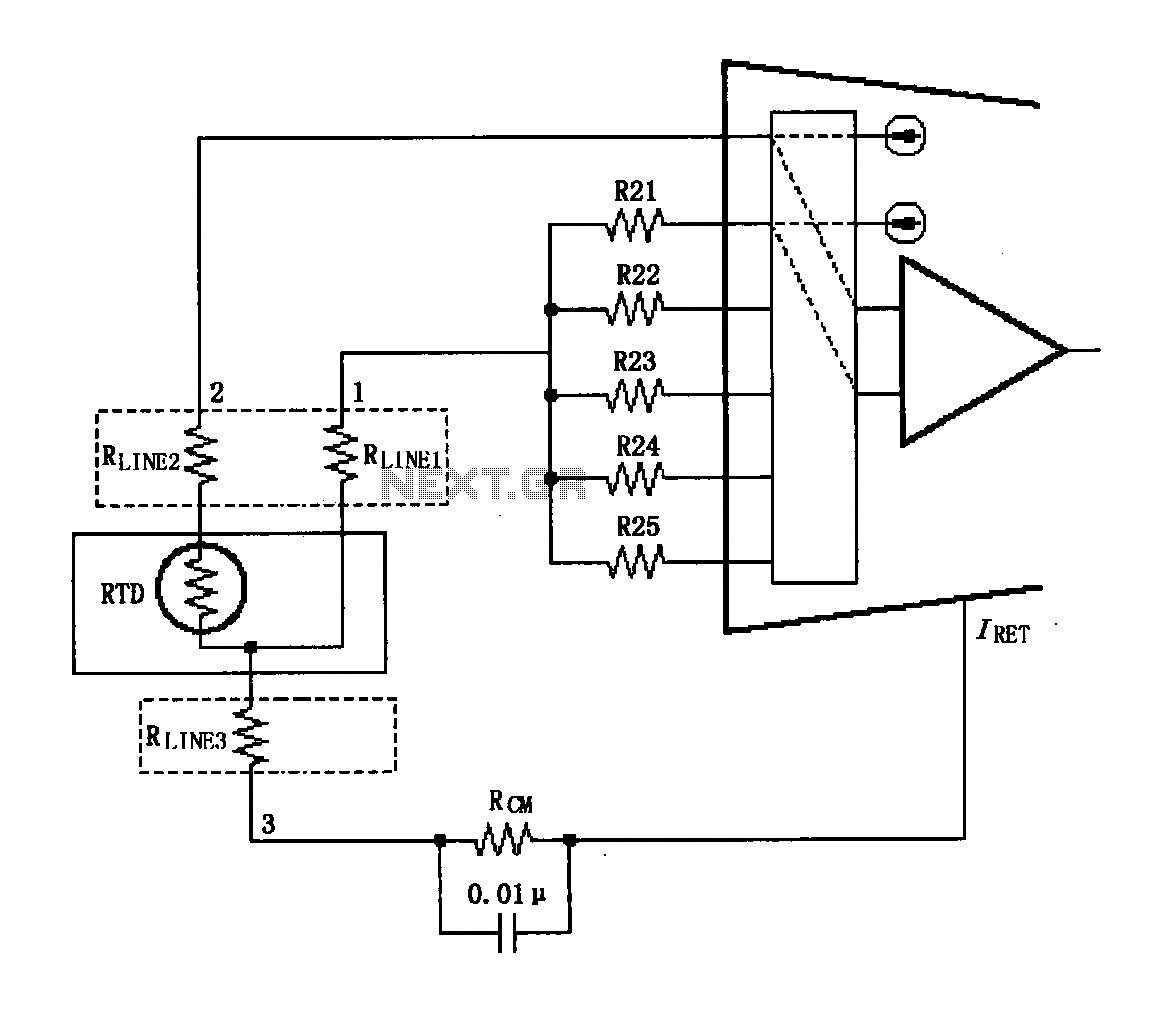
The circuit diagram illustrates the three-wire RTD connection for the XTR108. It is important to note that the lead resistance of the RTD sensor can introduce measurement errors. In the provided figure, connections "1" and "2" represent the lead lengths, which can affect the magnitude and direction of any interference encountered. This interference is categorized as common mode voltage, which can be mitigated by the programmable gain amplifier (PGA) integrated within the XTR108. The circuit offers five selectable temperature ranges, achieved by selecting resistors R21 through R25, allowing for different minimum temperature characteristics.
The XTR108 is a precision current-output temperature sensor interface designed to work with three-wire RTD (Resistance Temperature Detector) configurations. The three-wire setup is advantageous as it helps to compensate for lead resistance, a common source of error in temperature measurements. The circuit ensures that the effects of lead resistance are minimized, thereby enhancing measurement accuracy.
In the schematic, the connections labeled "1" and "2" denote the RTD leads, which connect to the XTR108. The lead resistance can introduce a voltage drop that may skew the temperature readings. The XTR108’s PGA plays a critical role in addressing this common mode voltage, effectively filtering out unwanted interference and improving the integrity of the signal.
Additionally, the circuit's design includes the capability to select from five different temperature ranges. This is accomplished through the use of resistors R21 to R25, which adjust the gain settings of the PGA. By altering these resistors, the circuit can be tailored to optimize performance for various temperature measurement applications, thus providing flexibility and precision in temperature sensing.
Overall, the design of the XTR108 three-wire RTD connection circuit emphasizes accuracy, flexibility, and noise reduction, making it suitable for a wide range of temperature monitoring applications.Shown for the XTR108 three-wire RTD connection circuit. Sensor connection RTD lead resistance may introduce errors. Using the figure and 2 connection, if "1" and "2" to XTR108 lead length as the lead resistance, as the size and direction of the interference introduced too. This interference belong to the common mode voltage, common-mode voltage can be suppressed by XTR108 the PGA.
The circuit has five selectable temperature range, i.e., by selecting R21 ~ R25 to select five different minimum temperature characteristics.
The XTR108 is a precision current-output temperature sensor interface designed to work with three-wire RTD (Resistance Temperature Detector) configurations. The three-wire setup is advantageous as it helps to compensate for lead resistance, a common source of error in temperature measurements. The circuit ensures that the effects of lead resistance are minimized, thereby enhancing measurement accuracy.
In the schematic, the connections labeled "1" and "2" denote the RTD leads, which connect to the XTR108. The lead resistance can introduce a voltage drop that may skew the temperature readings. The XTR108’s PGA plays a critical role in addressing this common mode voltage, effectively filtering out unwanted interference and improving the integrity of the signal.
Additionally, the circuit's design includes the capability to select from five different temperature ranges. This is accomplished through the use of resistors R21 to R25, which adjust the gain settings of the PGA. By altering these resistors, the circuit can be tailored to optimize performance for various temperature measurement applications, thus providing flexibility and precision in temperature sensing.
Overall, the design of the XTR108 three-wire RTD connection circuit emphasizes accuracy, flexibility, and noise reduction, making it suitable for a wide range of temperature monitoring applications.Shown for the XTR108 three-wire RTD connection circuit. Sensor connection RTD lead resistance may introduce errors. Using the figure and 2 connection, if "1" and "2" to XTR108 lead length as the lead resistance, as the size and direction of the interference introduced too. This interference belong to the common mode voltage, common-mode voltage can be suppressed by XTR108 the PGA.
The circuit has five selectable temperature range, i.e., by selecting R21 ~ R25 to select five different minimum temperature characteristics.
